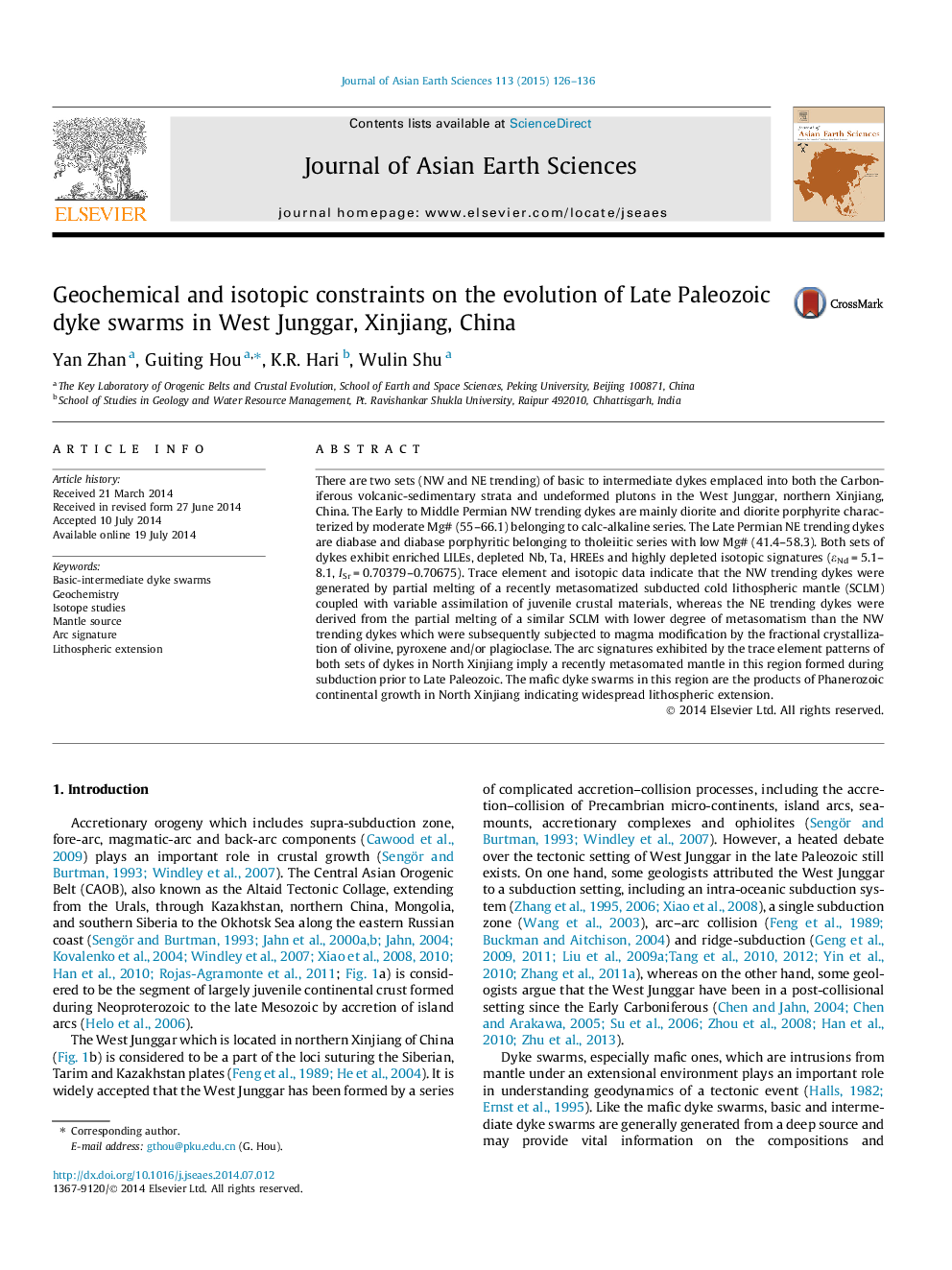| کد مقاله | کد نشریه | سال انتشار | مقاله انگلیسی | نسخه تمام متن |
|---|---|---|---|---|
| 4730219 | 1356743 | 2015 | 11 صفحه PDF | دانلود رایگان |

• Two sets (NW and NE trending) of basic-intermediate dyke swarms was analyzed.
• The dykes’ signature of arc can be explained by melting of a metasomated SCLM.
• Widespread lithospheric extension can be indicated by analysis of the mafic dykes.
There are two sets (NW and NE trending) of basic to intermediate dykes emplaced into both the Carboniferous volcanic-sedimentary strata and undeformed plutons in the West Junggar, northern Xinjiang, China. The Early to Middle Permian NW trending dykes are mainly diorite and diorite porphyrite characterized by moderate Mg# (55–66.1) belonging to calc-alkaline series. The Late Permian NE trending dykes are diabase and diabase porphyritic belonging to tholeiitic series with low Mg# (41.4–58.3). Both sets of dykes exhibit enriched LILEs, depleted Nb, Ta, HREEs and highly depleted isotopic signatures (εNd = 5.1–8.1, ISr = 0.70379–0.70675). Trace element and isotopic data indicate that the NW trending dykes were generated by partial melting of a recently metasomatized subducted cold lithospheric mantle (SCLM) coupled with variable assimilation of juvenile crustal materials, whereas the NE trending dykes were derived from the partial melting of a similar SCLM with lower degree of metasomatism than the NW trending dykes which were subsequently subjected to magma modification by the fractional crystallization of olivine, pyroxene and/or plagioclase. The arc signatures exhibited by the trace element patterns of both sets of dykes in North Xinjiang imply a recently metasomated mantle in this region formed during subduction prior to Late Paleozoic. The mafic dyke swarms in this region are the products of Phanerozoic continental growth in North Xinjiang indicating widespread lithospheric extension.
Journal: Journal of Asian Earth Sciences - Volume 113, Part 1, 1 December 2015, Pages 126–136